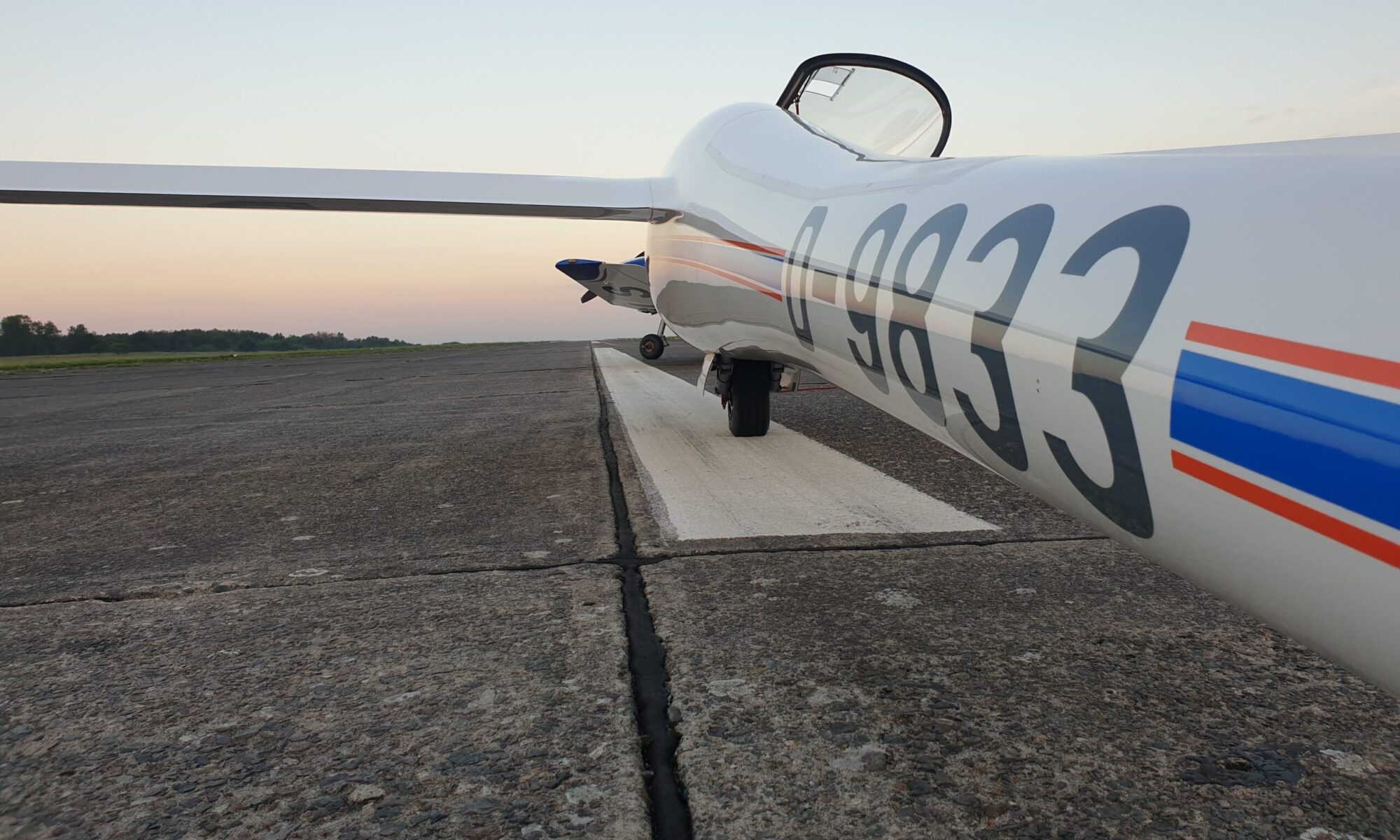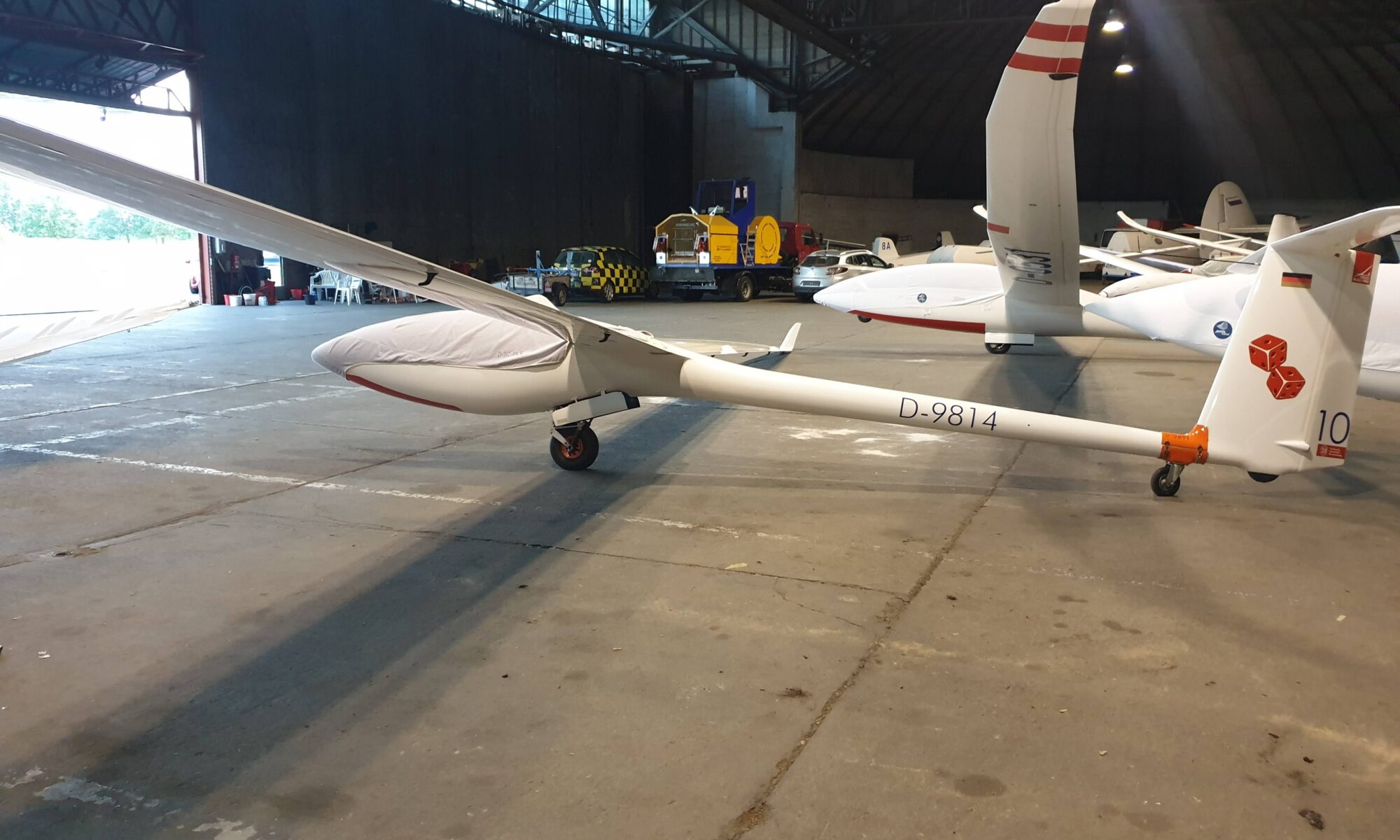As a result of my education in embedded systems programming, I’ve come to respect minimalism. Perfection – for me – is found when there is nothing left to subtract.
Shortly after my arrival in Stendal, I made my way to the enormous glider hangar. I had never seen glider prototypes and I was keen to have a look at what the Akafliegs brought to Stendal this year. There I met the Akaflieg Berlin B-12, the FTAG Esslingen Apis Jet, but one glider stood out for me personally… the Akaflieg Braunschweig SB-14.
The SB-14 has to be one of the most slender composite sailplanes that has been produced so far! An exercise in minimalism. Function dictates form. I love it! During my visit the SB-14 regularly flew test flights, and I spoke to some people who designed parts of this sleek machine. So I just had to know more, and started to talk to Lars Samake, project leader for the current certification efforts.

In contrast to some other Akaflieg designs, the SB-14 was not designed to test a new concept. Instead the goal was to minimize the surface of the fuselage compared to other gliders. To further reduce drag a special wing profile was designed, where the transition from laminar to turbulent flow happens very late. The airflow is forced from laminar to turbulent using boundary layer blowout holes, similar to what some other gliders (DG-300, ASG-29 and others) use.
The SB-14 had it’s maiden flight already in 2003, and has flown under a Permit to Fly ever since. As with most Akaflieg projects, the goal is to create something which passes certification, so the intention has always been to finish certification. Certification to JAR-22 was started in the past, but never finished.
The flight tests during the Sommertreffen of 2023
In the past few years, the “high risk” tests for JAR-22 have already been performed. These include tests like extending the airbrakes at 1.05 times the intended Vne.
This year it was time for calibration of the airspeed indicator, checking stalling behavior, checking the air brake effectiveness, control forces, stability… you name it. The goal was to perform two certification flights per day.
Two flights per day doesn’t sound like that much, but each flight should be thoroughly prepared the evening before the flight. During the flight everything is filmed, so an additional one to two hours of evaluation takes place after the flight. During the first weeks of the Sommertreffen, Lars did all these tasks himself, but he was happy to leave the flying to another pilot once a more aft center of gravity was required. During the whole process, Lars was supported by the members of Akaflieg Braunschweig and pilot with extensive flight test experience, and the LBA is also present during the Sommertreffen.
What’s next?
So what’s left for certification? The same tests that were performed this year should be performed with water ballast, in order to test the glider at the maximum take-off weight. These include tests evaluating stall speed, stall characteristics, general flying characteristics and take-off/landing behavior of the glider.
I can’t wait to see this beautiful glider back in the air next year. Hopefully for the last time with a Permit to Fly…

